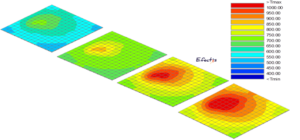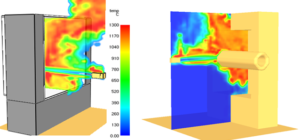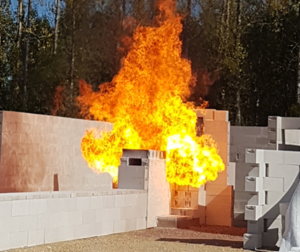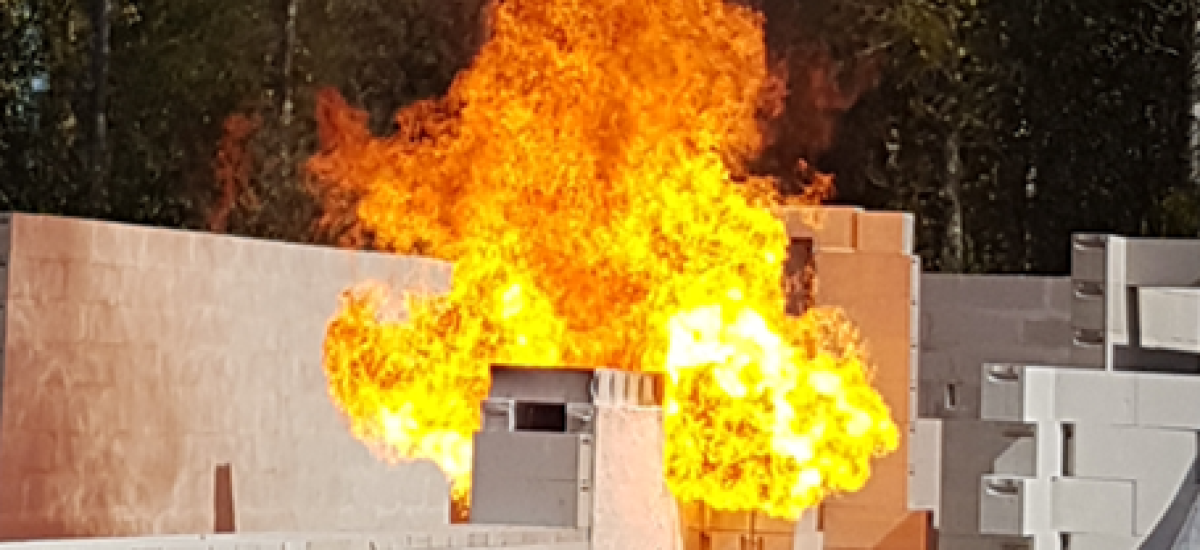18/10/2018
Jet fires arising from high-pressure leakages represent a severe hazard in petroleum, petrochemical and gas plants, especially in offshore structures. These fires give rise to high convective and radiative heat fluxes and high erosive forces when the jet impinges an element.
The thermal solicitations imparted to the tested products cannot be reproduced in conventional furnaces to evaluate their fire performance. Consequently, the jet fire facility prescribed by the ISO 22899-1 standard was adopted. It allows the simulation of a large-scale jet fire in structural elements that are full-size but smaller than in typical real-life situations. This test is designed to give an indication of how passive fire protection materials will perform.
A numerical study based on the VIRGILE methodology is performed, which proposes and validates a numerical model of the testing facility designed with the CFD code FDS. The model focuses only on thermal loads close to the tested elements, to predict the thermal loads near the target and the second part of the jet downstream of the lift-off area, where combustion takes place. Typical external and internal configurations described in the reference standard are modelled and the resulting flame characteristics and thermal loads are compared with experimental results.


Fairly good agreement is found for both characteristics. Once thermal solicitations on the specimen are calculated, boundary conditions are evaluated and applied to the exposed side of the material, considering a mapping due to the inhomogeneity of thermal loads. A thermal transfer analysis into the element is performed with the finite element code SAFIR. Then the virtual jet fire model allows pre-assessing protection thickness can be used to optimise a protection material configuration. However, no mechanical loads are considered in this study. Coupling thermo-mechanical is a future step for the jet fire facility modelling.

This work was presented during the annual Efectis seminar for fire safety in oil and gas industry / marine fire safety, and during the international Congress on Numerical Methods in Engineering CMN 2017.
Contact: Virginie Drean – [virginie.drean@efectis.com]

